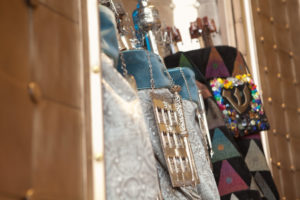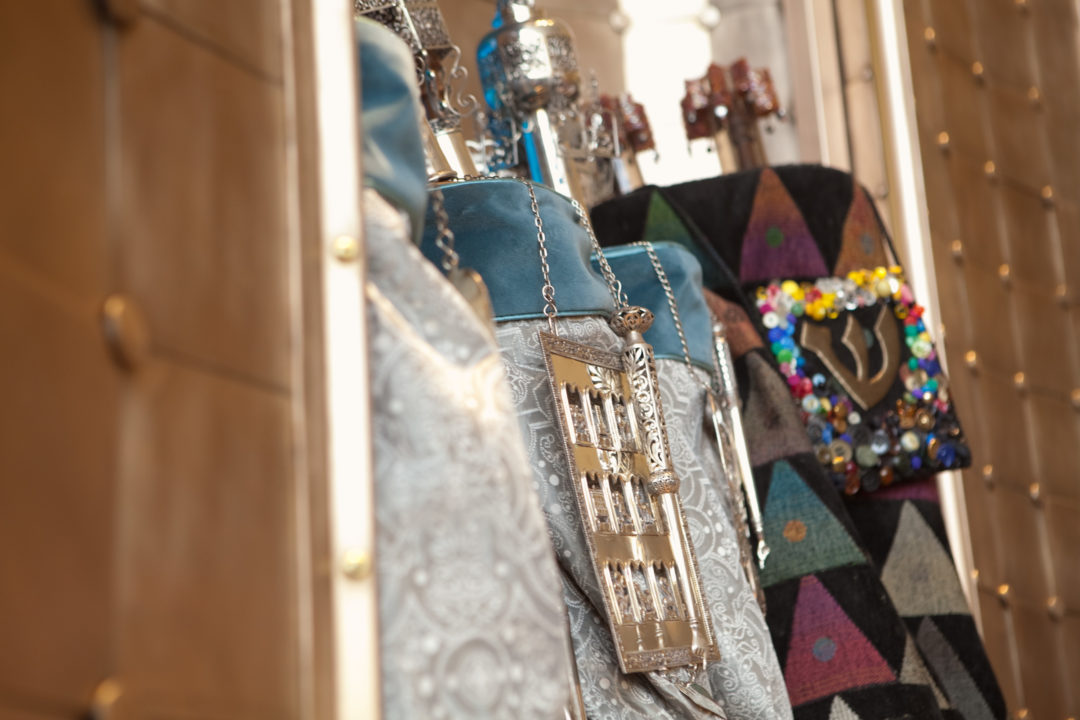
The Rakovnik Torah acquired by our synagogue in 1973 is one of some 1500 Torah scrolls, often referred to as Holocaust scrolls, which were collected by the Nazis along with other seized Jewish property during the 1940’s. It was first displayed by them at the Jewish museum in Prague, Czechoslovakia and then in 1948, taken to a warehouse in the outskirts of Prague until around 1960. Then, in 1963–1964, all these scrolls were purchased by a British philanthropist and taken to the Westminster Synagogue in London. Most of the scrolls had identity tags indicating their origin and we were able to trace the Rakovnik scroll to that town in then Czechoslovakia. The Westminster Synagogue created a trust for the purpose of distributing these torahs on permanent loan to synagogues throughout the world.
Until 2005, our scroll was displayed in a Plexiglas case at TBE. It was often placed on a reading table for a Yom Hashoah service and then returned to its case. In 2005, when members were planning a Yom Hashoah service with Rabbi Sisenwine, he expressed his desire to place the Rakovnik Torah in the ark, the aron kodesh, with our other Torah scrolls, but lamented the lack of a Torah covering to enable such placement. It was then that TBE members Nelson and Mimi Burstein and Michael and Laura Gilman, in memory of their parents, commissioned Toronto textile artist Sue Krivel to create the mantle, breastplate, and rimmonim you now see adorning this Torah in the ark standing with our other Torah scrolls. While the scroll has been repaired as best it can, it is not considered kosher for purposes of reading the weekly parsha, but it is seen whenever the ark is opened and participates in a hakafah around the sanctuary on High Holy Days and other occasions.
In describing the dressing of the Rakovnik Torah, artist Krivel tells us the mantle is composed of rows upon rows of triangles evoking the remembrance of markers and tombstones and the discriminatory badges of various colors that Jews in the concentration camps were required to wear.
“The triangles point upward, heavenward, symbolizing hope as they reach for light, beseeching help and acknowledging faith… The colors visually move upward from dark to light, from monotone to vibrant, reflecting the darkness and evil of the Holocaust and the ultimate ascent to the light and life of liberation.”
Krivel notes that the wide, dark band at the bottom is of charcoal and gray vertical stripes that reminds of concentration camp clothing and contains the Hebrew words “ani ma’amim” (I believe)—words often sung by victims of the Nazis.
The breastplate that rests on the surface of the mantle is encrusted with buttons surrounding a golden letter “shin,” denoting Shaddai (a name of God) and shalom for peace. The buttons remind us of the piles and piles of clothing removed from the victims in the camps. In addition, Krivel explains that for her these buttons serve as a metaphor for the piles of human souls as she viewed the overwhelming displays and collections when visiting the camps: “Buttons were never again just simple fasteners or decoration. For me buttons had become like people. Each button a metaphor for a soul.”
The rimmonim are beaded and embellished with crystals, bells, and pomegranates intended to “capture the vibrancy of sunlight,” as well as remind us of the bells and pomegranates placed on the hem of the robes of the priests (Exodus 39:24-25).


